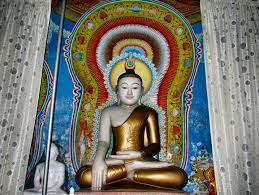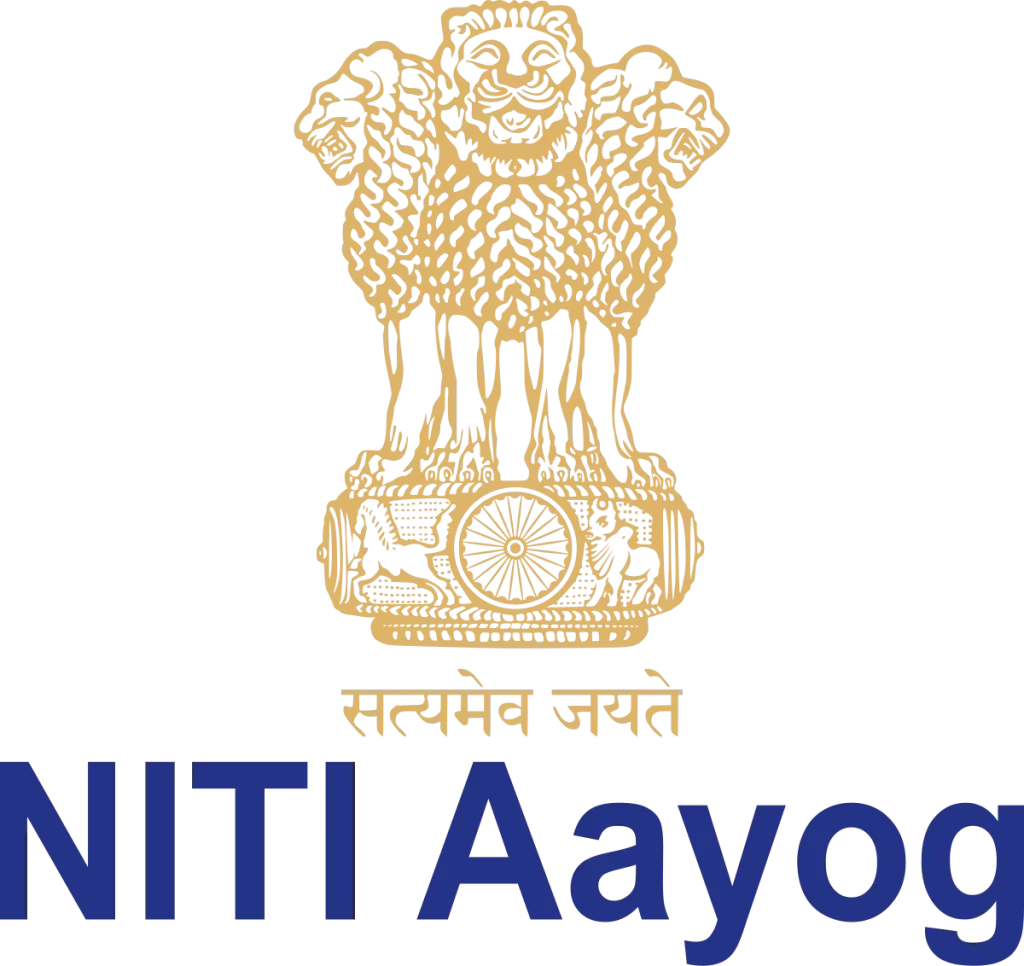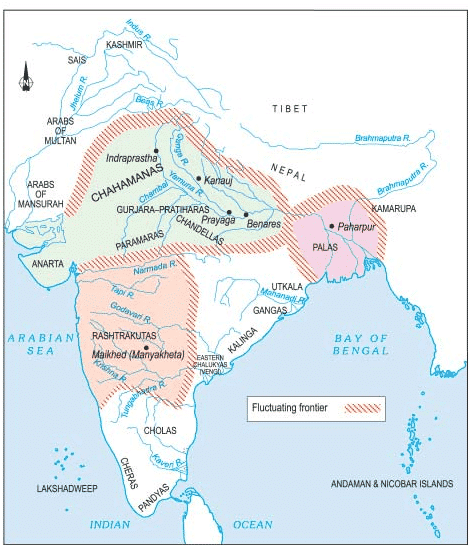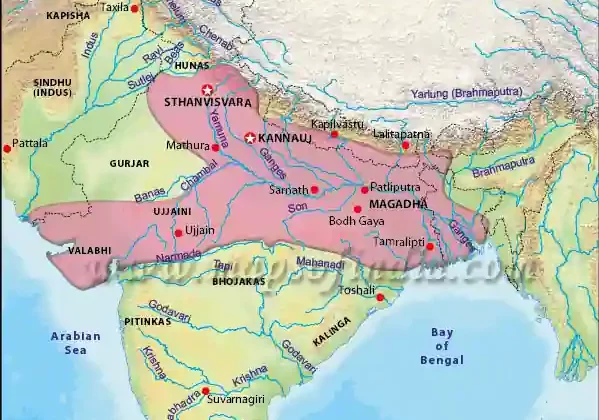Hinayana, Mahayana and Vajrayana Buddhism
- After the death of Gautama Buddha , Buddhism divided into two sects: Mahayana and Hinayana.
- A Yana is a vehicle. A Hinayana is a lesser vehicle while a Mahayana is a great vehicle.
- The Mahayana sect, which means ‘Great Vehicle’ in Sanskrit, believed in the divinity of the Buddha. The sect encouraged idol worship in Buddhism.
- The Hinayana sect, meaning ‘Small Vehicle’ in Sanskrit, did not believe in the divinity of the Buddha. It stressed on individual salvation through self-discipline and mediation.
- Tantric or Esoteric Buddhism, sometimes called Vajrayana (the Vehicle of the Thunderbolt), developed about 500–600 C.E. in India.
Hinayana Buddhism
- Hinayana Buddhist consider Gautama Buddha as an ordinary human being who attained Nirvana.
- It believes in the original teaching of Buddha.
- It does not believe in Idol worship and tries to attain individual salvation through self discipline and meditation.
- The goal of the Hinayana practitioner is that of ending attachment to self and, thereby, becoming an Arhat, who undergoes no further rebirth.
- Hinayana Buddhism is followed in Sri Lanka, Myanmar, Thailand, Cambodia and Laos.
- Ashoka patronised the Hinayana sect and Pali the language of masses was use by the Hinayan scholars.
- One of the sub-sects of Hinayana is Theravada.
Theravada Buddhism
- Theravada is believed to be the oldest form of Buddhism and is often referred to as the ‘traditions of the elders’.
- Theravada believes in the concept of vibhajjavada i.e., “teaching of analysis”.
- Theravada Buddhists strive to be arhats.
- Arhats are perfected people who have gained true insight into the nature of reality.
- This means they have followed the Noble Eightfold Path to ‘blow out’ the three fires of greed, hatred and ignorance and have become enlightened.
- In Buddhism, enlightenment leads to nirvana , which means freedom from the cycle of rebirth (samsara). Consequently, they will no longer be reborn through samsara.
- Theravada tradition upholds the monastic path and adheres to the oldest surviving recorded sayings of the Buddha, collectively called the Pali canon.
- Theravada is the dominant form of Buddhism today in Sri Lanka as well as Burma, Thailand, Laos, and Cambodia.

Mahayana Buddhism
- This sect believes in the heavenliness of Buddha and believes in Idol Worship. It is also called Bodhisattva Vehicle.
- Fundamental principles of Mahāyāna doctrine were based on the possibility of universal liberation from suffering for all beings (hence the “Great Vehicle”)
- Mahayana Buddhists believe they can achieve enlightenment through following the teachings of the Buddha.
- The goal of a Mahayana Buddhist may be to become a Bodhisattva and this is achieved through the Six Perfections.
- Compassion is very important in Mahayana Buddhism.
- Initially understood as companions to the Buddha, bodhisattvas are spiritual beings who compassionately vow to achieve buddhahood, but have deferred this aspiration in order to liberate all creatures in the universe from suffering.
- Therefore, Bodhisattvas choose to stay in the cycle of samsara to help others to achieve enlightenment as well as themselves.
- The most popular bodhisattvas appearing in sculpture and painting include Avalokiteshvara (bodhisattva of mercy and compassion), Maitreya (the future Buddha), and Manjushri (bodhisattva of wisdom).
- Mahayana also spread to Southeast Asia, however its greatest impact is felt in the East Asian nations of China, Korea, and Japan.
- One of the sub-sects of Mahayana is Vajrayana.
Key difference between Theravada and Mahayana Buddhists: Theravada Buddhists strive to become Arhats and gain freedom from the cycle of samsara, Whereas Mahayana Buddhists may choose to stay in the cycle of samsara out of compassion for others.
Tantric or Vajrayana Buddhism
- An offshoot of Mahayana Buddhism, the origins of Tantric Buddhism can be traced to ancient Hindu and Vedic practices as well, including esoteric ritual texts designed to achieve physical, mental, and spiritual breakthroughs.
- Tantric Buddhism is sometimes described as offering a shortcut to enlightenment.
- Because some practices subverted mainstream Buddhism and Hinduism, engaging in acts otherwise considered taboo, its practitioners were secretive.
- Vajrayana was last of the three ancient forms to develop, and provides a quicker path to Enlightenment than the other two.
- They believe that the physical has an effect on the spiritual and that the spiritual, in turn, affects the physical.
- Vajrayana Buddhists encourage rituals, chanting, and tantric techniques, along with a fundamental understanding of Theravada and Mahayana schools, as the way to attain Enlightenment.
- Vajrayana Buddhism is predominant in Tibet and Nepal. However, it also influenced parts of Southeast Asia and East Asia.
Zen Buddhism
- Zen Buddhism is said to have originated in China.
- Zen Buddhism treats Zen meditation and daily practice as essential for attaining Enlightenment, and deemphasizes the rigorous study of scripture.
Difference between Hinayana, Mahayana and Vajrayana Buddhism :
| Mahayana (Greater Vehicle) | Hinayana (Smaller Vehicle) | Vajrayana (Diamond Vehicle) |
| Mahayana Buddhism consider Gautama Buddha to be a divine being who will help his followers to attain nirvana. Believed that Buddha would be bom again. Mahayana Buddhists may choose to stay in the cycle of samsara out of compassion for others. | Hinayana Buddhist consider Gautama Buddha as an ordinary human being who attained Nirvana. Buddha would never be reborn. | In Vajrayana, the Buddha is not considered a person; rather he is a mirror to our own mind. The main deity is Tara (a lady). |
| It believes in the heavenliness of Buddha and Idol worship of Buddha and Bodhisattvas embodying Buddha Nature. The ultimate goal under Mahayana is “spiritual upliftment”. The concept of Bodhisattva is the result of Mahayana Buddhism. | It does not believe in Idol worship and tries to attain individual salvation through self discipline and meditation. The goal of the Hinayana practitioner is that of ending attachment to self and, thereby, becoming an Arhat, who undergoes no further rebirth. | It believes in Tantra’s, Mantras and Yantras superiority as being a faster vehicle to liberation containing many skillful methods of tantric ritual. |
| Followers of Mahayana Buddhism can be found in China, (South) Korea, Japan and Tibet. | Hinayana Buddhism is followed in Sri Lanka, Myanmar, Thailand, Cambodia and Laos. | Vajrayana Buddhism is prominent in Tibet, Bhutan and the Himalayan region. |
| Scriptures of Mahayana Buddhism were written Sanskrit. | Scriptures of Hinayana Buddhism were written in Pali. | Scriptures were written in Sanskrit. |
| Nalanda was a centre for Mahayana Buddhism. | Nalanda and Vallbhi was the centre of Hinayana Buddhism. | Vikramasila was a centre for Vajrayana Buddhism. |
| Kanishka patronised the Mahayana sect. | Ashoka patronised the Hinayana sect. | Pala-dynasty patronised the Vajrayana sect. |
| One of the sub-sects of Mahayana is Vajrayana. | One of the sub-sects of Hinayana is Theravada. | – |
Also refer :
- The Concept Of Bodhisattva In Buddhism
- Important Buddhist Pilgrimage Sites
- Know About The Top 10 Disciples Of Buddha
- Symbols Of Five Great Events Of Buddha’s Life
- Important MCQs From the History Of Ancient India








